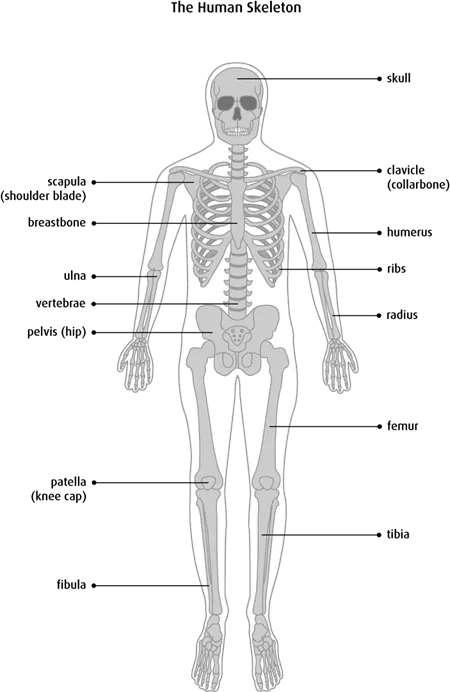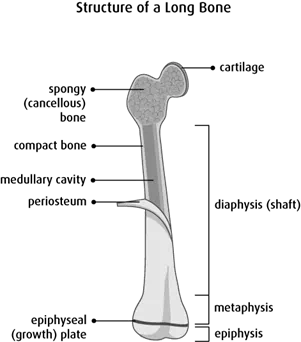What is bone cancer?
Bone cancer starts in the cells of the bone or cartilage. It is also called primary bone cancer. A cancerous (malignant) tumour is a group of cancer cells that can grow into and destroy nearby tissue. It can also spread (metastasize) to other parts of the body. Primary bone cancer is very rare in adults over the age of 40. It is more common in children, adolescents and young adults.
Other types of cancer can spread to the bone, but they are not the same disease as primary bone cancer. Cancer that starts in another part of the body and spreads to the bone is called bone metastasis or secondary bone cancer. This is much more common than primary bone cancer. Find out more about bone metastasis.
Types of bone tumours
Bone or cartilage cells sometimes change and no longer grow or behave normally. These changes may lead to non-cancerous (benign) conditions such as bone cysts. They can also lead to non-cancerous tumours such as osteochondroma, osteoma and osteoclastoma (also called giant cell tumours of bone).
But in some cases, changes to bone or cartilage cells can cause bone cancer.
The most common types of cancerous bone tumours found in adults over the age of 30 are chondrosarcoma and osteosarcoma. These tumours are most often found in the legs or arms. Chordoma is another cancerous tumour that can start in the bones of the skull or spine.
Rare types of bone cancer can also develop. These include fibrosarcoma, angiosarcoma and undifferentiated high-grade pleomorphic sarcoma. Ewing sarcoma is much more common in children and young adults than in older adults.
The bones
The adult human skeleton is made up of 206 bones. Together, groups of bones and cartilage form the skeleton, which gives shape and form to the body.

Bone cells
There are 3 types of cells that make up bones:
- Osteoblasts build new bone.
- Osteoclasts dissolve and remove old bone.
- Osteocytes carry nutrients from the blood to the bone and move waste products away from the bone.
Bone is a very active tissue. Bone tissue is constantly being replaced by new bone tissue (remodelled). Some hormones, minerals and bone cells have a role in the process of bone remodelling. Bones respond to changes in the blood’s calcium levels and the pull of gravity and muscles on the skeleton.
Types of bone
Bones may be classified based on their shape.
Long bones are longer than they are wide. They usually have a shaft with heads at both ends. They are mostly made up of compact bone. Examples of long bones are thigh and arm bones.
Short bones are often smaller cube-shaped bones. They contain mostly spongy bone. Examples of short bones include wrist and ankle bones.
Flat bones are thin, flat and are often curved. They have 2 thin layers of compact bone with a layer of spongy bone between them. Examples of flat bones are the ribs or the breast bone.
Irregular bones have complex shapes and can’t be classified into the above categories. Examples of irregular bones include the pelvic bones and the vertebrae of the spine.
Structure
Bone is one of the hardest materials in the body. It is made of collagen and minerals, such as calcium, that make it strong and hard. Although bones differ in shape and size, they have basically the same structure and function.
Bone is made up of different layers of materials. Several terms are used to describe features of bones throughout the body.
Periosteum
The periosteum is a layer of fibrous tissue that covers the bone, except at the ends.
Compact bone
Compact bone is the dense, hard, smooth outer layer of bone. Compact bone surrounds the yellow bone marrow in the shaft of the bone and supports the hollow part of the bone.
Compact bone has many canals (passageways) that contain blood vessels and nerves. Blood vessels carry the blood to bone cells. The blood brings oxygen and nutrients to the bone cells. It also takes away carbon dioxide and waste products. Nerves are in the bone and around the bone.
Medullary cavity
The medullary cavity is the space inside the shaft that contains yellow bone marrow. The yellow bone marrow mainly stores fatty tissue.
Spongy bone
Spongy (cancellous or trabecular) bone is made up of small pieces of bone and lots of open space, sort of like a honeycomb. Spongy bone stores the red bone marrow where blood cells are made. In an adult, red marrow is found mainly in the spongy bone in the skull, breastbone (sternum), ribs, pelvic bones, collar bone (clavicle) and spinal bones (vertebrae).
Cartilage
Cartilage covers the ends of the bones. It is a tough, fibrous connective tissue mixed with a gel-like substance. It is softer than bone but firmer than most tissues. Cartilage stops the bones from rubbing together and acts like a cushion to absorb shock.
The long bones
Cancer is more likely to start in the long bones of the body.

Long bones have 4 main parts:
The shaft (diaphysis) of a long bone makes up most of the bone’s length.
The metaphysis is the part of a long bone next to the diaphysis.
The epiphysis is the end of the long bone. It is made up of compact and spongy bone tissue. Long bones have an epiphysis at each end.
The growth (epiphyseal) plate between the metaphysis and the epiphysis is a layer of cartilage that allows the bones to grow. This disappears by the age of 20.
What the bones do
Bones do many things, including:
- give the body its shape and support the body’s tissues
- protect important organs, such as the heart, lungs and brain
- work with muscles, tendons and ligaments to allow the body to move
- store fat and minerals and release minerals, such as calcium, phosphorus and magnesium, when they are needed by the body
- make blood cells in the red bone marrow of certain bones
